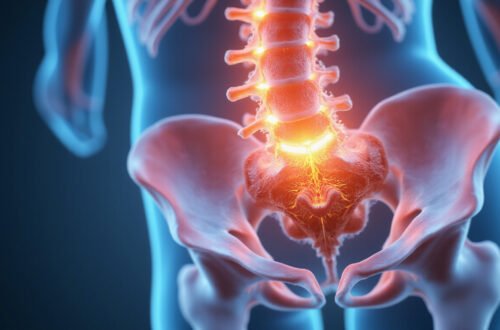Dealing with persistent lower back pain and leg discomfort can be both frustrating and debilitating. If you’re experiencing sharp, shooting pains along your leg, numbness, or tingling sensations, you might be suffering from sciatic nerve issues. An effective sciatica diagnosis is crucial to identify the underlying cause swiftly, allowing for targeted treatment and faster relief. In this article, we’ll explore how to accomplish a precise sciatic nerve diagnosis and what steps you can take to get back to your daily routine quickly.
Understanding Sciatica and Its Symptoms
Sciatica isn’t a condition itself but a symptom of an underlying problem affecting the sciatic nerve—the longest nerve in your body, running from your lower back down through your hips, legs, and feet. Typical symptoms include:
- Sharp, shooting pain in the lower back or buttocks
- Pain that radiates down one leg
- Numbness or tingling in the leg or foot
- Muscle weakness in the affected leg or foot
Because these symptoms can resemble other health issues, accurately diagnosing the cause of sciatica is essential for effective treatment.
Why Is Accurate Sciatica Diagnosis Important?
Quickly pinpointing the cause of sciatica ensures you receive the appropriate therapy before the condition worsens. Misdiagnosis or delayed diagnosis may lead to persistent pain, muscle weakness, or nerve damage. A precise sciatica diagnosis helps in:
- Determining whether conservative treatments like physical therapy are suitable
- Identifying if surgical intervention is necessary
- Preventing the progression of nerve damage
- Developing a personalized treatment plan based on the specific cause
Common Causes Leading to Sciatic Nerve Pain
Understanding the common reasons behind sciatica can illuminate what healthcare professionals will look for during diagnosis:
- Herniated Disc: The most frequent cause, where a spinal disc slips out of place and compresses the sciatic nerve.
- Spinal Stenosis: Narrowing of the spinal canal puts pressure on nerve roots.
- Degenerative Disc Disease: Wear and tear on spinal discs leads to nerve irritation.
- Piriformis Syndrome: The piriformis muscle irritates or compresses the sciatic nerve.
- Spondylolisthesis: A vertebra slips forward over the one below, pinching the nerve.
By analyzing these underlying causes, healthcare providers can determine the most effective treatment route.
How Is Sciatica Diagnosis Performed?
Effective sciatic nerve diagnosis involves a combination of clinical examination, imaging tests, and sometimes nerve conduction studies. Here’s what the process typically includes:
1. Medical History Review
Your healthcare provider will ask about:
- Duration and nature of symptoms
- Activities that worsen or alleviate pain
- Past injuries or surgeries
- Any other health conditions
This helps in forming an initial hypothesis about the cause.
2. Physical Examination
The physical exam is vital for a sciatica diagnosis and includes:
- Observation: Checking gait, posture, and muscle atrophy.
- Palpation: Feeling for tender areas in the lower back and buttocks.
- Range of Motion Tests: Assessing flexibility and identifying pain triggers.
- Neurological Tests: Evaluating reflexes, muscle strength, and areas of numbness.
3. Specific Diagnostic Tests
Healthcare providers may perform or order tests such as:
- Straight Leg Raise Test: Lying flat while raising the affected leg detects nerve compression.
- MRI Scan: Provides detailed images of soft tissues, discs, and nerves, making it the gold standard for sciatic nerve root issues.
- CT Scan: Offers cross-sectional images, especially useful if MRI is contraindicated.
- X-rays: Show bony structures but do not reveal soft tissues; helpful for ruling out fractures or tumors.
- Electromyography (EMG): Measures nerve and muscle function to confirm nerve compression severity.
4. Differential Diagnosis
It’s essential to exclude other causes of leg pain, such as vascular issues or spinal tumors, to ensure the correct diagnosis.
Recognizing Early Signs in Your Own Body
While professional assessment is crucial, there are some signs you might notice that warrant seeking medical advice promptly:
- Sudden, severe leg pain or weakness
- Loss of bladder or bowel control
- Numbness in the groin or inner thigh
- Persistent pain lasting more than a week despite rest
Early detection can significantly improve treatment outcomes.
Effective Treatment Strategies Post-Diagnosis
Once the cause of sciatica has been determined, treatment options can be tailored to target the root issue. Common approaches include:
- Physical Therapy: Strengthening and stretching exercises to relieve nerve pressure.
- Medications: Pain relievers, anti-inflammatory drugs, and muscle relaxants.
- Epidural Steroid Injections: Reduce inflammation around compressed nerves.
- Surgical Intervention: When conservative treatments fail, procedures such as discectomy or laminectomy may be performed.
Adopting a comprehensive approach ensures a quicker and more effective recovery.
Prevention Tips for Sciatica
Prevention is always better than cure. You can reduce your risk of developing sciatica by:
- Maintaining good posture
- Regular low-impact exercise to strengthen back and core muscles
- Avoiding prolonged sitting or standing without breaks
- Using proper lifting techniques
- Maintaining a healthy weight
Incorporating these habits can help keep your spine healthy and prevent nerve compression.
FAQ: Sciatica Diagnosis and Its Related Queries
Q1: What is the best method for a sciatica diagnosis?
A1: Magnetic Resonance Imaging (MRI) is considered the best method because it provides detailed images of soft tissues, including discs and nerves—all vital for an accurate sciatica diagnosis.
Q2: How quickly can sciatica diagnosis be confirmed?
A2: Once a healthcare provider assesses your symptoms and conducts necessary examinations and imaging tests, a sciatica diagnosis can often be confirmed within a few days to a week.
Q3: Can I identify the cause of sciatica myself?
A3: While you can note symptoms and patterns, only a healthcare professional can accurately diagnose the cause of sciatica through targeted tests and imaging.
Conclusion: Take Action for Effective Sciatica Diagnosis
Timely and accurate sciatic nerve diagnosis is essential for effective treatment and relief. If you experience persistent leg and lower back pain, don’t delay seeking professional medical evaluation. Early detection not only alleviates pain but also prevents potential permanent nerve damage. Remember, understanding your symptoms and undergoing appropriate diagnostic tests paved the way for a personalized treatment plan—leading you back toward health and vitality.
Don’t let sciatic pain hold you back—schedule an appointment with a healthcare provider today and take the first step toward lasting relief!






